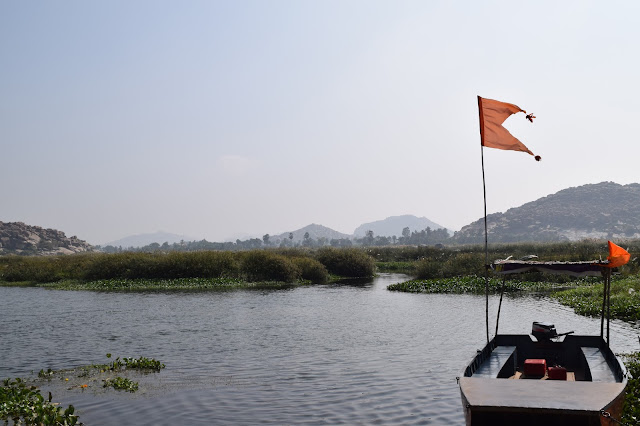My trip to Hampi was a very interesting one. When I
first stepped foot on to the sacred land that was once the capital of the great
Vijayanagara Empire and now the homes of one of the major pilgrimage sites, I
was surprised. It was a weekday and a rather hot one, but there were many
people. I kept going to Hampi for six consecutive days and not even once did it
feel like there were people less on a certain day. There were people everywhere. Even in temples
like Vitthala, that was a very long walk away. The place was buzzing with tourists
and people from nearby cities. The temples, the restaurants, the boats that
lead to the Hampi, there were people around all the time. And just like me, I
am sure they too were mesmerised by this land just like me.
Hampi had many stories to tell. Many more than I
could hear I am sure, since I had a hard time communicating with the locals as
they mostly spoke in Kannada. But the stories I heard were good enough to get
me interested. During my time there, I heard a lot about what Hampi used to be.
About it’s great ambience and how the people would come to Hampi each year for
its yearly festival and how happily the locals stayed together. I also heard about
how people’s houses were demolished and people were forced to pack their
belongings and move out of the homes they had stayed in forever. It was UNESCO’s
interference in the area that displaced all these people. Though not many hold
any hostile feelings against this major organisation, there are many who find
it strange as to why they were forced out of the place that they had been
living in for such a long time, the place where they had been born and grown up
in. They felt that they had a right to Hampi much more than these government
organisations. This got me thinking, UNESCO’s aim was to conserve Hampi and its
ruins from further deterioration. They came to conserve and preserve the ethos
and culture of Hampi…but aren’t the natives, the locals a major part of it? Don’t
the people itself create the culture of a place? By throwing them out, weren’t
they destroying the essence of Hampi? The Hampi I saw was filled with tourists
and shops & people trying to sell you the grandeur of Hampi which has been
reducing as days pass. Hampi is now only half as mesmerising as it used to be.
The temples barely have people praying and though the monumental beauty
remains, the atmosphere of the place is not as active and attractive as it once
was.
I can only imagine what Hampi once was by hearing
the stories, looking at photos and reading the articles that I have. I feel
sorry for the people who have been displaced from their homes but at the same
time, Hampi still is a place one should visit at least once in their lifetime,
for whatever is left of the beautiful land in ruins.
























